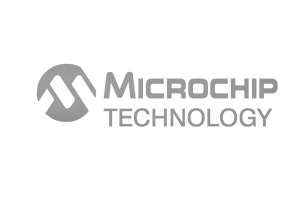ATMEGA128RFA1-ZF Overview
The ATMEGA128RFA1-ZF is a high-performance 8-bit microcontroller featuring an integrated 2.4 GHz IEEE 802.15.4-compliant radio transceiver. Designed for wireless communication applications, it combines a robust AVR CPU core with a low-power radio module, enabling seamless integration of microcontroller and RF functions in a single device. This integration reduces component count and board space, making it ideal for embedded wireless systems. With advanced peripherals, efficient power management, and reliable data transmission capabilities, it supports developers in creating compact, energy-efficient wireless solutions. For more details, visit Fabricant de circuits intégrés.
ATMEGA128RFA1-ZF Technical Specifications
| Paramètres | Spécifications |
|---|---|
| Architecture de base | 8-bit AVR RISC CPU |
| Fréquence de fonctionnement | Up to 16 MHz |
| Mémoire flash | 128 KB |
| SRAM | 16 KB |
| EEPROM | 4 KB |
| Radio Frequency | 2.4 GHz IEEE 802.15.4-compliant transceiver |
| Plage de tension | 1,8 V à 3,6 V |
| Packages | 64-pin QFN |
| Interfaces périphériques | USART, SPI, I2C, ADC, Timers |
| Consommation électrique | Low active and sleep modes for energy efficiency |
ATMEGA128RFA1-ZF Key Features
- Integrated 2.4 GHz RF Transceiver: Enables wireless communication without external RF components, simplifying design and reducing cost.
- Efficient 8-bit AVR CPU Core: Delivers reliable processing performance with low power consumption, critical for battery-powered applications.
- Comprehensive Memory Resources: 128 KB Flash, 16 KB SRAM, and 4 KB EEPROM support complex firmware and data storage needs.
- Multiple Communication Interfaces: USART, SPI, and I2C facilitate flexible connectivity with various sensors and peripherals.
- Low Voltage Operation: Runs from 1.8 V to 3.6 V, enhancing compatibility with a wide range of power supplies and reducing energy usage.
- Robust Peripheral Set: Includes ADC, timers, and watchdog timer for precise control and system reliability.
- Compact 64-pin QFN Package: Optimizes PCB space, suitable for compact embedded wireless devices.
ATMEGA128RFA1-ZF Advantages vs Typical Alternatives
This device offers distinct advantages over typical microcontrollers by integrating a high-quality 2.4 GHz radio transceiver directly with an efficient AVR core. This reduces the need for separate RF modules, improving system reliability and minimizing power consumption. Its broad voltage range and comprehensive peripheral set enhance design flexibility, while embedded memory resources support complex applications. The compact packaging and low power modes further promote efficient, space-saving wireless solutions compared to traditional alternatives.
🔥 Produits les plus vendus

Texas Instruments BQ24075 Chargeur de batterie linéaire - boîtier QFN 5mm x 4mm

Texas Instruments INA219 Module capteur de courant - Boîtier SOIC, Surveillance de précision

Texas Instruments LM4041 Référence de tension de précision - Boîtier SOT-23

Texas Instruments OPA2134 Audio Op Amp - double, haute performance, boîtier SOIC-8
Applications typiques
- Wireless sensor networks: Ideal for low-power, reliable data collection and transmission in industrial and environmental monitoring systems.
- Home automation: Enables smart devices to communicate wirelessly for lighting, security, and appliance control systems.
- Industrial control systems: Provides robust wireless connectivity for machine-to-machine communication and remote monitoring.
- IoT devices: Supports compact, energy-efficient embedded designs requiring integrated microcontroller and RF capabilities.
ATMEGA128RFA1-ZF Brand Info
The ATMEGA128RFA1-ZF is part of a well-established family of microcontroller solutions known for combining advanced AVR CPU technology with integrated RF transceivers. This product line is trusted in the semiconductor industry for delivering reliable wireless communication capabilities alongside flexible embedded control. By integrating key functions into a single chip, it addresses the growing demand for compact, energy-efficient wireless systems across industrial, commercial, and IoT sectors.
FAQ
What communication protocols does this microcontroller support?
The device supports multiple serial communication interfaces including USART, SPI, and I2C. These protocols enable flexible connectivity with various sensors, actuators, and other peripherals in embedded systems.
🌟 Produits vedettes

"Acheter un comparateur de tension de précision MAX9312ECJ+ en boîtier DIP pour des performances fiables"

QCC-711-1-MQFN48C-TR-03-1 Bluetooth Audio SoC with MQFN48C Package

Modèle 0339-671-TLM-E - Boîtier TLM-E haute performance pour des fonctionnalités améliorées

1-1415898-4 Boîtier de connecteur, fil électrique vers tableau, réceptacle, emballé
What is the maximum operating frequency of the embedded CPU?
The microcontroller operates at up to 16 MHz, providing a balance between processing speed and power efficiency suitable for wireless and low-power embedded applications.
How does the integrated RF transceiver benefit system design?
By including a 2.4 GHz IEEE 802.15.4-compliant radio transceiver on-chip, it eliminates the need for external RF modules. This simplifies PCB layout, reduces bill of materials cost, and improves overall system reliability.
📩 Nous contacter
What are the power supply requirements for this device?
The microcontroller operates within a voltage range of 1.8 V to 3.6 V. This broad range allows designers to use various power sources, including lithium-ion batteries and regulated supplies, optimizing power consumption.
Which package type is used, and how does it affect integration?
This product comes in a compact 64-pin QFN package, which offers a small footprint suitable for space-constrained designs. The package also supports efficient thermal management and easy PCB assembly.





